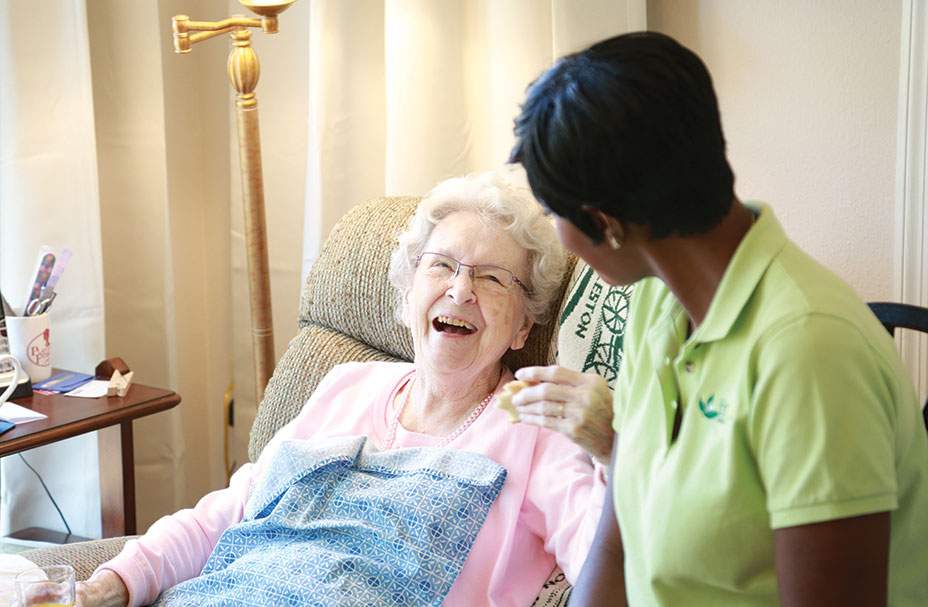Most people are familiar with assisted living facilities. However, they are less familiar with in-home assisted living, also known as in-home care.
Assisted Living Facilities
Assisted living facilities offer lodging, usually with some housekeeping, meals, medication reminders and medication administration, recreation, and various levels of one-on-one scheduled assistance. For example, a resident may contract, and pay an additional fee for someone to help them shower and dress. Facilities also usually check in with their residents periodically throughout the day, but check-in schedules are subject to staffing levels and other duties. In addition, facilities provide some type of emergency alarms and/or emergency response units in resident rooms, or on their person.
In-Home Assisted Living
In-home assisted living provides trained caregivers within a person’s current home or apartment to assist with tasks of daily living, like bathing dressing, meal preparation, shopping, etc., safety supervision, recreation and companionship. With in-home assisted living, elders who do not wish to move out of their current home are able to remain there, while improving their personal safety and security.
In-home assisted living companies, like First Light Home Care, work with the elder and/or their family to analyze the clients’ needs and design a care plan[1] that provides a Caregiver at key times during the day and evening hours. As a result, the elder is purchasing care for only the times of day it is needed, thereby reducing their assisted living expense. However, if needed, 24 hour-per-day, seven day-per-week care can be provided in the home.
The care plan is a fluid document, meaning, as needs change, and additional care is required, the plan can be adjusted to include additional services. Utilization of a fluid care plan not only saves the elder money, it can sustain a person in their own home for as long as the elder wishes to remain living there. The key to in-home assisted living is flexibility – it can be designed to best meet the needs of the elder, and can be flexible enough to change as that person’s needs change.
[1] Care Plan – a document setting forth a detailed description of the types of services to be provided to each client.
